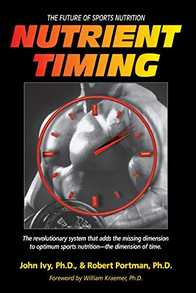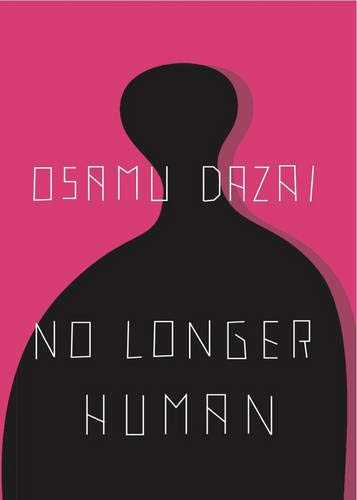
Nutrient Timing: The Future of Sports Nutrition
byJohn Ivy, Robert Portman
Nutrition is KEY to making gains in the gym. It took me far too long to realize this, but once I did I went in search of books to help unlock my potential and Nutrient Timing was one of those books that taught me a lot about how the muscles work and the underlying chemical processes that occur before, during and after workouts. Backed by the latest research on sports nutrition the authors detail how by timing your carbohydrate intake you can multiply the amount of protein your body utilizes to repair muscles, leading to faster recovering and more muscle growth. The book is well laid out with very practical advice and a ton of examples. You will learn a lot about your body and how to be smarter about nutrition.
Motivations to Read
The big theme for me in 2015 has been nutrition. I made a some great muscle gains in 2014, and my fitness has been on track. However, I felt like I wasn't investing in my nutrients as much I was spending time in the gym. Failure to get my nutrition up to pace with my strength training, meant that I was growing, recovering and lifting as much as I could. I was also looking into what to eat, but with Nutrient Timing, I would learn when to eat to get the most out of my recovery and growth.
3 Reasons to Read
- Learn how better timing of when you consume nutrients pre or post workouts can enhance and optimize recovery and growth
- How muscles work and adapt to training
- What are the (macro and micro) nutrients for healthy and sustained growth
Notable Quotes
The Anabolic Phase is the forty-five-minute window following a workout in which your muscle machinery, in the presence of the right combination of nutrients, initiates the repair of damaged protein and replenishes muscle glycogen stores. - John Ivy & Robert Portman A high-protein diet consisting of 41 to 48 percent carbohydrate, 19 to 26 percent protein, and 33 percent fat is an excellent one for strength athletes. - John Ivy & Robert Portman Lifestyle factors can increase the insulin sensitivity of the muscle cells and thereby create a body that is generally disposed to build muscle proteins and less disposed to store body fat. - John Ivy & Robert Portman
Nutrient Timing: The Future of Sports Nutrition Notes & Summary
The theme of this book is to explain how timing is an important factor in sports nutrition.
Before most of the focus for strength athletes was on what to eat. There is now research regarding when nutrients are consumed may even be more important than the what.
"The Nutrient Timing System relies on making use of nutrient activation - the ability of certain nutrients to help other nutrients perform their jobs more effectively."
"The most important nutrient activators in Nutrient Timing are the mutual activators protein and carbohydrate, which influence each other's actions through insulin."
"Carbohydrate boosts protein synthesis and reduces protein degradation. Protein boosts glycogen synthesis and glucose metabolism (for more energy during workouts)."
The Three Phases of The Nutrient Timing System (NTS)
The Energy Phase
The phase during workouts where your body focuses on fueling your muscles with sufficient energy to drive muscle contraction.
Nutrient Timing: Optimize when you consume carbohydrates to make more efficient utilization of muscle glycogen to improve muscle endurance.
NTS Goals for the Energy Phase:
- Increase nutrient delivery to muscles and spare muscle glycogen and protein.
Consume a carbohydrate or carbohydrate/protein drink to preserve muscle glycogen and maintain strength during a workout.
Increase in Endurance:
Carb/Protein Drink (25 mins)
Carbohydrate Sports Drink (19 mins)
Water (12mins)
- Limit Immune System Suppression.
Carbohydrate supplementation during exercise can help maintain blood sugar levels while helping to decrease cortisol levels, protecting your immune system functions.
- Minimize Muscle Damage.
Supplementation with Carbs, Vitamins E and C and BCAAs can help minimize muscle damage.
- Set the nutritional stage for a faster recovery following your workout.
"Increased muscle mass comes from a cycle of muscle stimulation, muscle breakdown, and muscle rebuilding."
Consuming protein during exercise will allow your body to use some of the ingested protein, instead breaking down muscle protein. Consuming carbohydrates will result in less depletion of glycogen stores.
"Consumption of a carbohydrate/protein drink ten minutes prior to your workout can raise both blood glucose and insulin levels."
Benefits:
- Reduced need to pull from muscle glycogen stores, leading to increased endurance.
- Greater protein synthesis after workout.
- Reduces the rise in cortisol after workout, which would lead to muscle degradation and a weakened immune system.
The Anabolic Phase
The forty-five-minute window after a workout when your body begins to repair damaged muscle protein and replenish muscle glycogen stores. After a workout your body is more sensitive to insulin, which gradually decreases and is highest during this time window. Your muscles will eventually become more resistant to insulin which slows down muscle glycogen recovery.
Nutrient Timing: Will help increase your insulin levels after a workout and keep your anabolic window open longer.
NTS Goals for the Anabolic phase
- Shift metabolic machinery from a catabolic state to an anabolic state.
A carbohydrate/protein drink will stimulate insulin levels, reduce cortisol levels and led to a number of anabolic reactions when the right nutrients are available.
- Speed the elimination of metabolic wastes by increasing muscle blood flow.
Increased insulin levels increased the rate of muscle blood flow, aiding in the removal of lactic acid, which when high decrease the rate at which CP (Creatine) is restored in the body.
- Replenish muscle glycogen stores.
A carb/protein drink is better combined, then either used in isolation and it helps to counteract the rapid depletion of muscle glycogen stores during exercise.
- Initiate tissue repair and set the stage for muscle growth.
Protein synthesis requires amino acids, which aren't found in carbohydrate supplementing, which is why protein is needed as well.
- Reduce muscle damage and bolster the immune system.
Some muscle damage is needed for developing more muscle mass. Excessive muscle damage will lead to restricted glycogen and protein synthesis, and muscle soreness leading to less effective workouts. Carbohydrate/protein supplementation will lead to more amino acids, specifically glutamine to help the immune system.
The Growth Phase
The rest period after the anabolic phase, where your muscle enzymes are working to increase the number of contractile proteins and the size of muscle fibers. During this phase consumption of a combination of protein and carbohydrates is very important.
Nutrient Timing: Maintain a high anabolic state and restore muscle glycogen, repair muscle tissue damage, and synthesize new muscle.
| NTS Phase | Time | What NTS Can Do for You |
| Energy | 10 minutes prior to and during a workout | Increase nutrient delivery to muscles and spare muscle glycogen and protein. |
Limit immune system suppression. Minimize muscle damage. Set the nutritional stage for a faster recovery following your workout.| |Anabolic|Within 45 minutes after a workout|Shift metabolic machinery from a catabolic to an anabolic state Speed the elimination of metabolic wastes by increasing muscle blood flow Replenish muscle glycogen stores Initiate issue repair and set the stage for muscle growth Reduce muscle damage and bolster the immune system| |Growth|Rapid Segment: The first 4 hours after a workout. Sustained Segment: The next 16-18 hours after a workout.|Maintain increased insulin sensitivity. Maintain the anabolic state Maintain positive nitrogen balance and stimulate protein synthesis. Promote protein turnover and muscle development.|
Three true statements most strength athletes would find hard to believe
- "A low-quality protein can be more effective in stimulating protein synthesis than a high-quality protein."
The effectiveness of protein is dependent on when you take it. Taking protein when you have a high "metabolic sensitivity", such as during the anabolic phase allows insulin to better distribute protein to be synthesized for muscle rebuilding.
A poor quality protein, like corn, eaten during the forty-five minute time window can be more effective than a higher quality protein, hours later, long after your body has become more insulin resistant, when far less protein synthesis would occur.
- "Sugar can stimulate protein synthesis."
High-glycemic carbohydrates can serve as nutrient activators that allow fats, carbohydrates, protein, minerals and water to work together. They will also increase insulin at a faster rate than complex carbs, leading to higher rates of protein synthesis.
- "Sugar is more effective than protein in preventing protein degradation in the muscle."
It can help you move from a catabolic to anabolic state.
"Metabolic sensitivity is the inherent property of muscles to modify their function depending on the needs and nutrients available."
"Nutrient activation is the combined action of different nutrients to produce a synergistic effect."
"Nutrient optimization is the shifting of muscle from a catabolic state to an anabolic state by making available key nutrients at the appropriate time."
"Muscle growth and activity are controlled in large part by anabolic and catabolic hormones."
"The primary catabolic hormones are glucagon, epinephrine, norepinephrine, and cortisol."
"The primary anabolic hormones are testosterone, growth hormone, IGF-1, and insulin."
"Insulin increases muscle glucose uptake and glycogen storage."
"Insulin increases net muscle protein by increasing amino acid transport into the muscle cell, by increasing protein synthesis and by reducing protein breakdown."
ATP - The Energy Currency of the Muscle
ATP stands for Adenosine triphosphate, it is an energy source stored in the muscles and is converted into energy to drive muscle contraction.
ATP is the only molecule that can support muscle contraction and it is in limited supply.
ATP replenishes with anaerobic (without oxygen), immediate energy, and aerobic (with oxygen) sustained energy, energy systems.
Anaerobic Energy System
Anaerobic energy renewal happens by breakdown of Creatine phosphate(CP), yup, that supplement creatine, or glycolysis.
ATP and CP are considered high-energy phosphate compounds, which fall under the phosphagen system which fuels fast powerful movements.
The second system after the Phosphagen system is glycolysis which is the breakdown of carbohydrates stored in the muscle in the form of glycogen and blood glucose. It is less efficient than the phosphagen system because with limited oxygen availability one of it's byproducts in creating ATP is lactic acid, which makes you feel sore.
Aerobic Energy System
The process of "cellular respiration", where the muscle is able to break down carbohydrate, fat, and when needed, protein to generate ATP when oxygen is present. This process occurs within the muscle fiber cells call "mitochondria", the more of them there are the more more energy capable of being produced.
Fuel Sources
- Carbohydrate: Glycogen is the form that carbs are stored in the body. A majority of glycogen is stored in the muscles, then the liver and small amounts are in the blood stream. Around 2,600 calories can fuel about 2 hours of moderate exercise.
- Fat: Fat is the body's most concentrated fuel source. A 200 lb man with 15% body fat has around 130,000 calories of energy. Converting fat to useable energy is a slower process than converting carbs.
- Protein: When carbohydrate stores are low, protein may used instead for energy. Your body can synthesize proteins that are "nonessential", by breaking down the amino acids and releasing them into the blood where they make their way to the liver and are converted into glucose, a process known as gluconeogenesis.
Hormones are chemical messengers.
How Hormones are Released
- Other Hormones
- Stimulation of nerve fibers (which happens during exercise)
- Changes in nutrient levels in the blood
Four Major Catabolic Hormones
- Glucagon
- Epinephrine
- Norepinephrine
- Cortisol
Four Major Anabolic Hormones
- Testosterone
- Growth Hormone
- IGF-I
- Insulin
The Metabolic Effects of the Catabolic and Anabolic Hormones
| Catabolic Hormones | Effect | Anabolic Hormones | Effect |
| Glucagon | Stimulates fat and liver glycogen breakdown and gluconeogenesis | Testosterone | Blocks cortisol and stimulates protein synthesis |
| Epinephrine | Stimulates fat, liver, and muscle glycogen breakdown | Growth Hormone | Stimulates bone and cartilage growth and protein synthesis |
| Norepinephine | Stimulates fat and liver glycogen breakdown | IGF-I | Stimulates growth of bone, cartilage, and muscle |
| Cortisol | Stimulates fat, liver, glycogen, and muscle protein breakdown | Insulin | Multiple effects on muscle protein synthesis, protein degradation, and glycogen replishment |
Glucagon: Released from the pancreas and lowers blood glucose levels. Increases breakdown of fat.
Epinephrine & Norepinephrine: Released from the adrenal glands during low blood glucose levels. Promotes breakdown of fat, increased heart rate and blood flow to muscles.
Cortisol: Generates fuel for working muscles. Too much can lead to protein degradation.
Testosterone: Released from the testes in males and from the ovaries and adrenal glands in females. Improves muscle recovery and enhances protein synthesis.
Growth Hormone: Released from the pituitary, stimulates muscle and cartilage growth.
IGF-1: Stands for insulin-like growth-factor. Released from pituitary gland, the muscle, liver and other organs. Stimulates protein synthesis in the bone, cartilage, and muscle.
Insulin: Released in the pancreas in response to high blood glucose levels.
"The more insulin sensitive the fat cells are at a given time, the more insulin will act to promote fat storage; the more insulin sensitive the muscle cells are, the more insulin will act to promote muscle glycogen storage and protein synthesis."
[..]
"Lifestyle factors can increase the insulin sensitivity of the muscle cells and thereby create a body that is generally disposed to build muscle proteins and less disposed to store body fat."
Insulin may be the most important hormone to muscle strength and mass.
- Insulin increases protein synthesis
- Insulin increases Amino acid transport
- Insulin reduces protein degradation
- Insulin increases glucose uptake
- Insulin increases muscle glycogen storage
- Insulin suppresses cortisol release
- Insulin increases muscle blood flow
Physiological and Metabolic Changes during Exercise
ATP Replenishment
Your muscle fibers need a rapid supply of ATP molecules which cause muscle contractions and are replenished from creatine and glycogen.
Hormonal Changes
Anabolic hormones don't play a large role during exercise. Catabolic hormones can have more of an effect in how energy is utilized. Insulin and cortisol are the most important regulatory hormones during exercise as they effect the degree of muscle damage and glycogen depletion.
Blood Flow
Blood flow is elevated up to 500 percent during exercise to aide in the transport of oxygen, minerals and removal of metabolic waste such as lactic acid and carbon dioxide.
Effect of the Protein Pool
Your body utilizes Protein during exercise for fuel and repair of muscles. A byproduct of muscle protein breakdown is branched-chain amino acids (BCAAs). BCAA's are used for synthesis of glutamine, which are important aides for your immune system, and there numbers begin to decline. Stressful exercise with low glutamine stores can weaken the immune system.
Muscle Damage
There are three primary causes of muscle damage:
- physical
- hormonal
- biochemical
As the muscle fibers expand and contract there is physical wear and tear. Some of this damage can be benefits as your muscle fibers recover and rebuild stronger to adapt to increased levels of stress.
The hormone cortisol stimulates muscle protein breakdown.
Biochemical damage can come from Free radicals(highly reactive molecules that can damage muscle protein).
Acute Inflammatory Response
The body's response to tissue injury which can further damage muscle cell membrane.
Immune Response
The immune system usually responds anytime there is cell damage, but during exercise your hormones will suppress some white blood cells as your body will be breaking down muscle cells.
"Immune system suppression can last up to seventy-two hours following exercise and may increase your susceptibility to infection."
Fluid Loss
"Consuming water during exercise helps maintain blood volume, lower body temperature, and reduce stress on the heart."
[ Table 4.2 Ideal Nutrient Composition of Supplements (Refer to page 44)]
NTS Anabolic Phase
Research as early as from 1988, in the Journal of Physiology showed that timing carbohydrate supplementation after exercise had a significant impact on the rate of muscle glycogen storage.
This was within the 45 minutes after exercise, the anabolic phase.
Higher levels of amino acids in the blood leads to more protein synthesis.
Two Conditions for Muscle Growth
- Metabolic Sensitivity
- Nutrient Optimization
NTS Recommendations for the Anabolic Phase
- Whey Protein: Contains all nine essential amino acids, a high concentration of BCAAs and is absorbed into the bloodstream quickly.
- High-Glycemic Carbohydrates: Rapidly absorbed carbs, usually contain sucrose, maltodextrin or dextrose. Complex carbs are a weaker stimulator of insulin. Note that this is only for the anabolic phase, other phases complex carbs will be beneficial to keep body fat maintainable. I use Hasbro's Gummy Bears, contains dextrose.
- Carbohydrate/Protein Ratio: Recommends a 3:1 to 4:1 ratio of high-glycemic carbohydrate to protein; 3 to 4 grams of carbohydrates per gram of protein.
- Amino Acids: Fuel protein synthesis. Leucine is a strong stimulate of protein synthesis and glutamine aids in maintaining a strong immune system.
Low Blood Amino Acid Levels
- Increased breakdown of muscle protein
- Increased release of amino acid from muscles
Higher Blood Amino Acid Levels
- Increased amino acid transport into muscle cells
- Initiate protein synthesis
- Antioxidants: Take antioxidant vitamins such as vitamin E and C to reduce free radicals in the body which can cause muscle protein damage and weaken the immune system.
| NTS Objective | Nutrient | Amount |
| Shift metabolic machinery from a catabolic state to an anabolic state | Whey protein | 13-15g |
| Speed the elimination of metabolic wastes by increasing muscle blood flow | High-glycemic carbohydrates such as glucose, sucrose, and maltodextrin | 40-50g |
| Replenish muscle glycogen stores | Leucine | 1-2g |
| Initiate Tissue repair and set the stage for muscle growth | Glutamine | 1-2g |
| Reduce muscle damage and bolster the immune system | Vitamin C | 60 - 120mg |
| Vitamin E | 80-400 IU |
"A delay of supplementation of more than two hours can significantly reduce protein synthesis and muscle glycogen replenishment."
NTS Growth Phase
The 18-24 hour period after the anabolic phase.
There are two segments within the Growth Phase:
- Rapid Segment: "A period of high anabolic activity, which lasts up to four hours if activated during the Anabolic Phase."
- Sustained Segment: "Muscle growth continues but at a slower rate."
"The protein synthesis during the Sustained segment is strongly influenced by dietary composition and caloric content."
"It is important to maintain a positive nitrogen balance during the Sustained Segment, which can be accomplished with a high-protein diet and high-protein/low-carbohydrate snacks or supplements."
"The strength athlete should consume between 0.91 and 1.2 grams of protein per pound of body weight per day for optimal muscle growth and development."
Macro Nutrition Ratios
"A high-protein diet consisting of 41 to 48 percent carbohydrate, 19 to 26 percent protein, and 33 percent fat is an excellent one for strength athletes."
"41 to 48 percent carbohydrate and 33 percent fat will give you the necessary energy for a strong workout and maintaining a healthy immune system."
[The book lists a number of tables detailing the right foods the eat and other meal plans - Buy the Book]
Nutrient Activators and Sports Supplements
"Nutrient activation is the process by which the biological effects of a certain nutrient are influenced through direct or indirect interaction with one or more other nutrients."
- Carbohydrate: The most important nutrient activator. Interacts with protein. Increases insulin levels which stimulates the transport of amino acids into the muscle and activates key elements that do protein synthesis.
- Protein: When interacting with carbohydrates, increases muscle glycogen synthesis; more glycogen is stored in the muscles for energy use.
- Amino Acids: Serve as building blocks for protein.
- Arginine: Helps the muscles manufacture other amino acids and is a good stimulator of insulin.
- Glutamine: Is the most nitrogen-rich amino acid, which aids in maintaining positive nitrogen balance in muscle tissue and helps prevent muscle protein breakdown.
- Branched-Chain Amino Acids (BCAAs): Leucine, isoleucine, and valine are the three special amino acids known as the branched-chain amino acids. Isoleucine and Valine are using as a direct source of energy during exercise. Leucine aids in muscle growth.
When BCAAs are taken during exercise, they provide extra energy and may prevent muscle breakdown, for quicker recovery.
- Creatine: Creatine is necessary for the production of creatine phosphate (CP), stored in the muscle and used for quick resynthesis of ATP, which are responsible for muscle contraction.
- Caffeine: Caffeine has been a popular stimulant of choice around some athletes. Research has shown that it doesn't actually increase endurance, but instead it may delay fatigue by reducing the athlete's perception of effort(pain). Key word being delay.
Not all protein is created equally.
Four Measures of Protein Quality:
- Protein efficiency ratio (PER): a measurement for growth rate with a fixed amount of protein. More accurate measures in animals than humans.
- The biological Value: a measurement of the amount of protein that is retained from the total absorbed quantity for maintenance and growth.
- Net protein utilization: a measurement of the amount of amino acids supplied by a given protein source that are used to synthesize new proteins in the body.
- Chemical score: a measurement of the concentration of the nine essential amino acids in a protein source.
| Protein | Protein Efficiency Ratio (PER) | Net Protein Utilization | Chemical Score |
|---|---|---|---|
| Whey | 3.0 | 104 | 92 |
| Casein | 2.5 | 71 | 76 |
| Soy | 3.9 | 100 | 94 |
| Egg | 2.2 | 74 | 61 |




